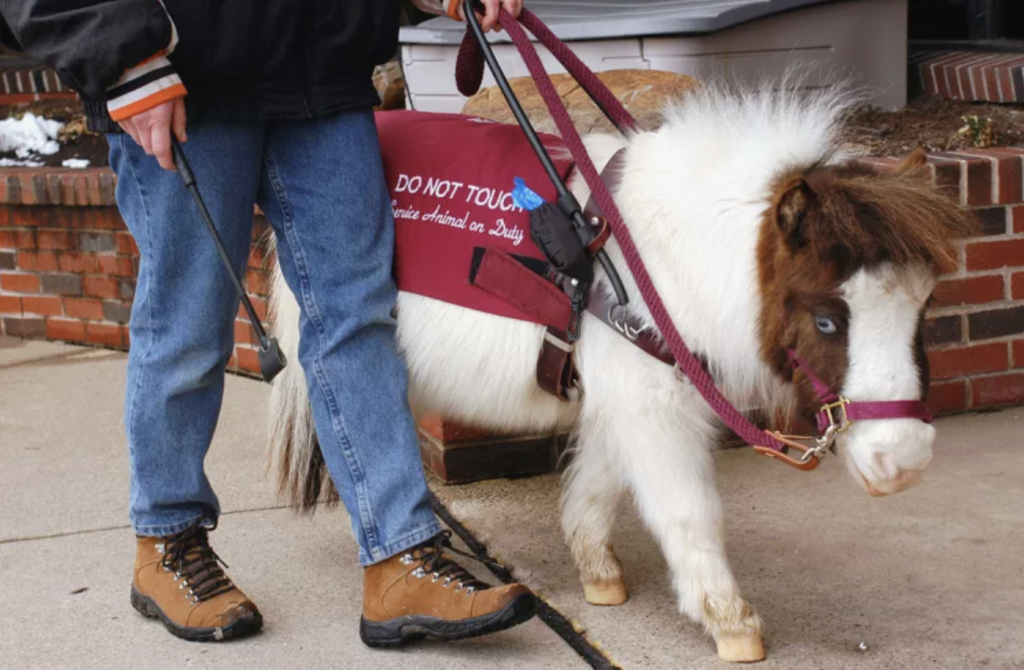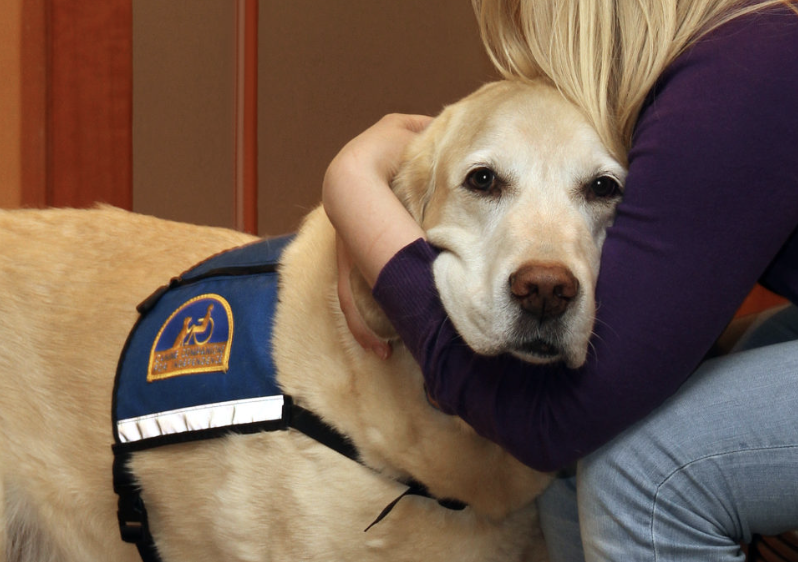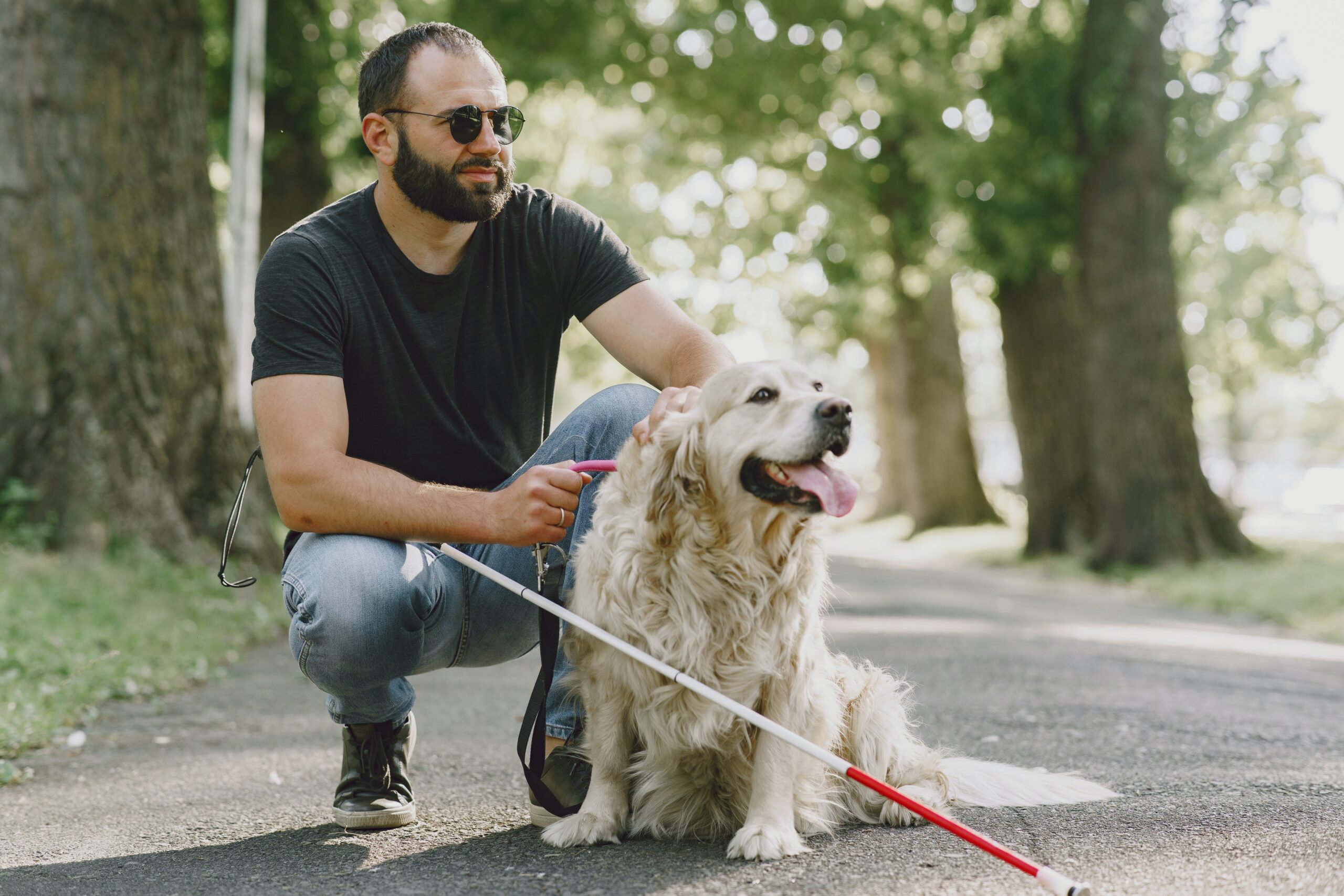As society continues to recognize and embrace the unique bond between humans and animals, the roles that animals play in our lives have expanded beyond companionship. From guide dogs for people with visual impairment to therapy animals providing emotional support, the contributions of these remarkable creatures are immeasurable. Service animals, emotional support animals, therapy animals, and even court facility dogs are contributing to the well-being and empowerment of individuals with disabilities. The month of August kicked off with Assistive Dog Week. The goal of Assistive Dog Week is to recognize, honor, and raise awareness around assistive animals and those who train them.
It is important to recognize that there are several different types of assistive animals with each having differing rights and responsibilities. In this article, we’ll delve into the various types of assistance animals, their legal protections, and the responsibilities associated with them.
Service Animals: Guardians of Independence and Accessibility

Image description: A miniature horse walks next to a person, pictured from the waist down, with a specialized harness for service animals.
A service animal, as defined by the Americans with Disabilities Act (ADA), is a dog or, in some cases, a miniature horse, that has been specifically trained to perform tasks for individuals with disabilities. These tasks can range from guiding individuals with visual impairment, alerting those with hearing loss, pulling a wheelchair, helping with balance, or even detecting seizures.
The ADA ensures that individuals with disabilities have the right to be accompanied by their service animals in public places such as community centers, medical offices, schools, public transportation, and government buildings. A survey conducted by the National Service Animal Registry found that 96% of respondents reported that their service animal positively impacted their overall quality of life and independence.
Certifying an animal as a service animal is a complex process that requires careful consideration, training, and adherence to legal guidelines. It is important to note that there is no official certification or registry for service animals under the ADA. Instead, the focus is on the animal’s training and its ability to perform specific tasks to assist a person with a disability.
Michael Stone, who is blind and is a member of the Board of Directors for CPWD, has a dog guide named Geo. Michael and Geo have a special relationship.
“Inside the house, Geo is a wonderful goofy labrador, just love, love, love. She bumps into things with no body awareness and carries her toys in her mouth. Outside the house, she is a guide, gets me to point A to point B safely. She knows dozens of words, such as ‘find the curb, find the door, find the chair’. She can help me find a chair in a room I’ve never been in before. She can sit for several hours with only short breaks.”
This is the standard role dog guides play for people who are visually impaired. Geo is a unique dog guide, however, as she has been trained as a running dog guide.
“Geo is one of the very few in the world that can guide at higher speeds,” explains Michael. “She can perform everything that a dog guide can do with walking, but with running. She is also a ski guide as well for Nordic skiing. I can train with her and do long distances. I don’t ski with poles when I’m with her. She applies everything she would do while walking, but at a higher speed, to almost inside a six-minute mile.”
Michael and Geo will be featured on the show HBO Real Sports. They are running a segment about dog guides and running dog guides which Michael and Geo were interviewed for. We will post further information about where the program can be viewed once it is available.
For more information on service animals, visit the ADA website service animal page here.
Emotional Support Animals: A Pillar of Emotional Well-being

Image description: A woman crouches down and hugs her golden retriever emotional support animal. The sun sets and likes the scene in golden color.
Emotional support animals (ESAs) are different from service animals. They do not perform specific tasks like service animals do, but instead offer vital emotional assistance to individuals with mental health conditions such as PTSD, anxiety, and depression. While ESAs do not require specialized training to perform tasks, their presence provides invaluable comfort and emotional stability to their owners.
Studies published in the Journal of Consulting and Clinical Psychology indicate that individuals with emotional support animals experience substantial decreases in symptoms of anxiety, depression, and loneliness. A recent study showed that having an ESA can reduce PTSD symptoms by up to 82% after just one week of interaction.
The Fair Housing Act (FHA) protects the rights of individuals with ESAs, allowing them to live in housing that may have a “no pets” policy and avoid having to pay pet deposits or pet rent. Additionally, ESAs can accompany their owners on flights with proper documentation, and enjoy certain privileges in housing and public settings such as:
- People with ESA’s cannot be denied housing or a hotel stay even in facilities with a no-pets rule.
- You cannot be charged a pet deposit or pet rent or fees with ESA. One exception is if your ESA causes damage to property, then you are liable for the cost.
- Your ESA cannot be denied based on allergies or fears of animals or on the breed of the animal. You have a right to privacy protection with your disability.
- Your landlord cannot legally ask you to reveal your disability in public.
For those considering an emotional support animal, certain steps need to be taken to ensure legal recognition and protection. Obtaining an emotional support animal letter from a licensed provider is key. This letter confirms the individual’s need for an ESA due to a mental health condition and should be provided to landlords and airlines as required. It’s important to note that intentionally misrepresenting a pet as an ESA or a service animal can have legal consequences and is considered a violation of the law in many states. This can lead to fines ranging from $25 – $500.
For more information, visit the American Kennel Club’s page on ESA’s here.
Court Facility Dogs and Therapy Animals: A Different Kind of Support

Image description: A courthouse dog is being embraced by a person. We can only see the person’s arm. The dog is a golden retriever and wears a harness with a courthouse emblem on the side.
Court facility dogs are specially trained dogs that assist individuals, especially children, during court proceedings. These dogs are trained to provide emotional support, alleviate stress, and create a more comfortable environment for those involved in legal proceedings. The presence of these dogs can help victims, witnesses, and other participants navigate the often challenging and intimidating court process. Research conducted by the American Humane Association showed that the presence of court facility dogs during legal proceedings significantly reduces the emotional distress experienced by children, leading to improved communication and cooperation. Learn more about these well-trained professional courthouse dogs here.
Therapy animals, often confused with emotional support animals, are owned by licensed therapists or medical providers. These animals are used in therapeutic settings to interact with patients and help improve their emotional and mental well-being. Therapy animals play a vital role in various environments, such as hospitals, nursing homes, and rehabilitation centers. These animals, usually dogs, but sometimes other species like cats or rabbits, play a vital role in improving the emotional well-being of therapy clients. A study published in the Journal of Pediatric Nursing demonstrates that therapy animals in healthcare environments can lead to reduced stress levels among patients, thereby enhancing the healing process.
You can learn more about therapy animals from Pet Partners, formerly Delta Society, here.
Service animals, emotional support animals, therapy animals, and court facility dogs each play unique and valuable roles in enhancing the lives of individuals with disabilities. It’s essential to understand the legal protections, distinctions, and benefits associated with these animals. From guiding the visually impaired to providing comfort in courtrooms and homes, these animals are powerful agents of positive change in our society.





